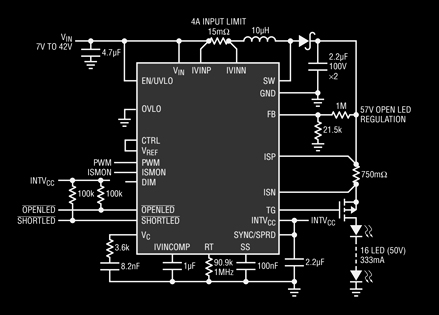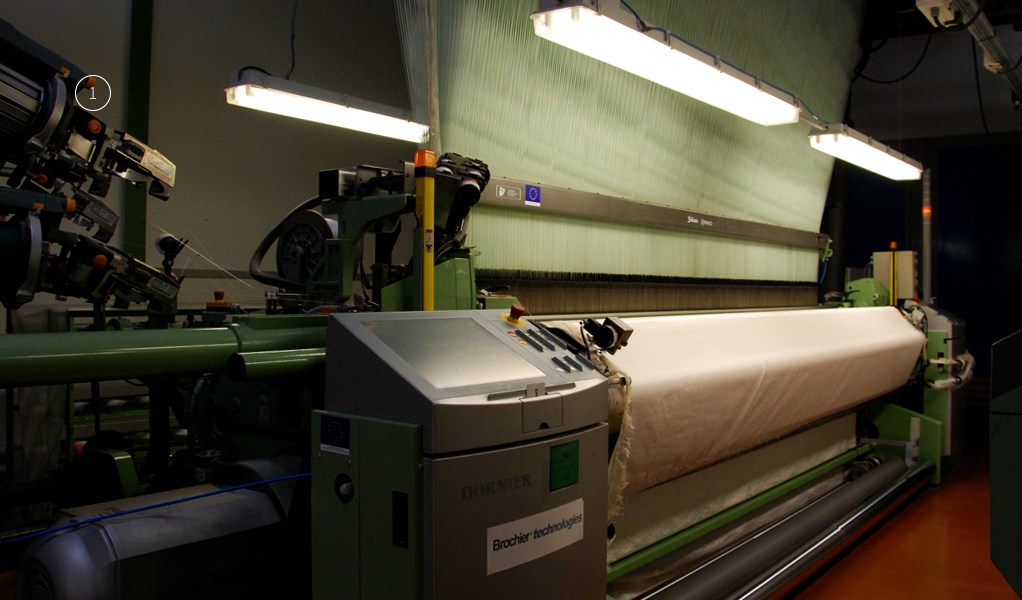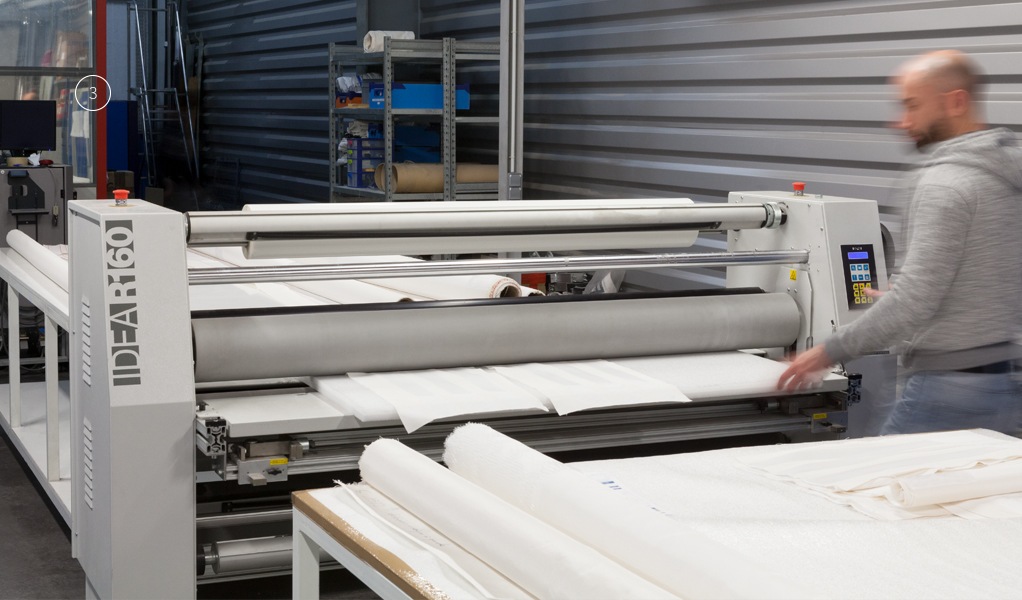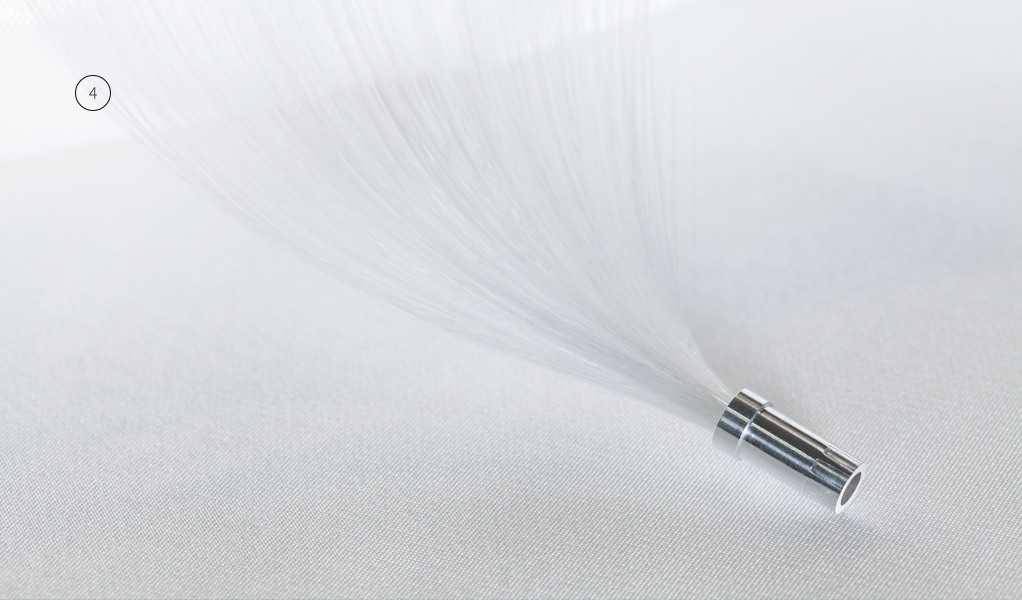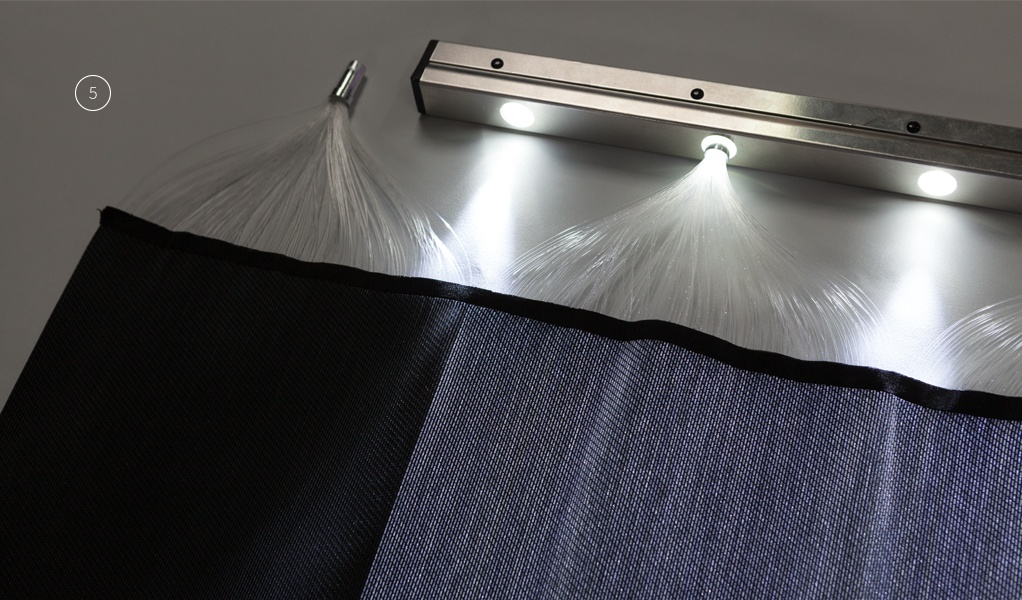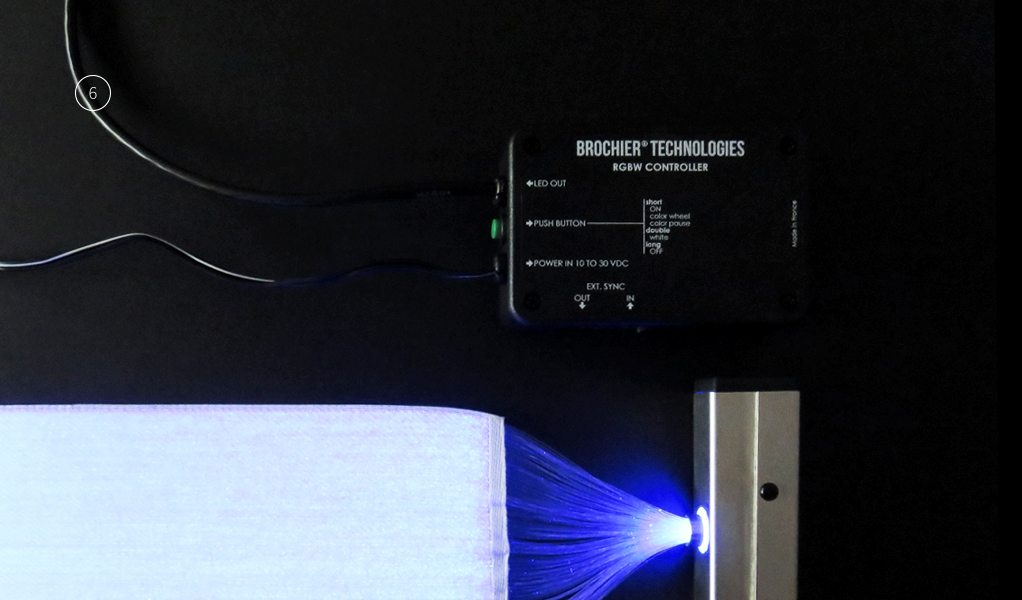Steps for making a luminous fabric
1. Weaving of optical fibres on a Jacquard loom (international patented).
2. Treatment of optical fibre surfaces for lateral lighting.
3. Other types of surface treatment and material assembly (international patented).
4. Connection of optical fibres via a matrix (international patented).
5. Coupling of optical fibre bundles with light sources (LED) (international patented).
6. Controlling and powering LEDs.
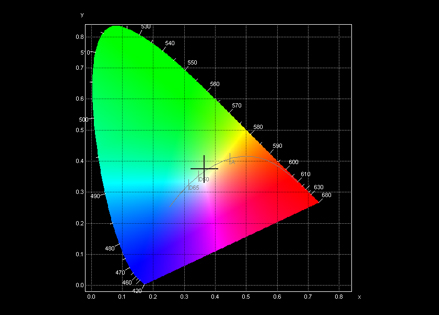
Light Characteristics
⋅ Polymer optical fibre : from 360 nm to 700 nm.
⋅ Silica optical fibre : UVC and infra-red (optical specific)
⋅ Monochrome or RGB light.
⋅ Dynamic and interactive management of light intensity and colours.
⋅ Single or double connector.
Design Characteristics
⋅ Even lighting or with logos.
⋅ Elements of textile surfaces or other blends of materials.
⋅ Small to large retail stores (up to several m²).
⋅ Ambient lighting : uniform or by section
⋅ Even lighting : uniform or by section
⋅ Ultra-thin (< 1 mm), ultra-light illuminating surfaces.
⋅ Flexible, rigid, flat, curved or 3D surfaces.
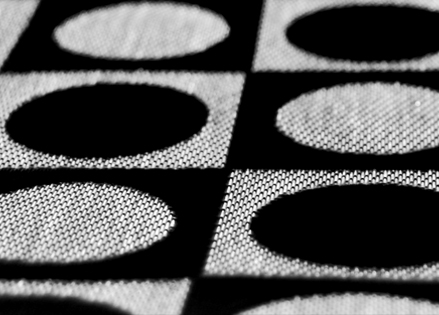
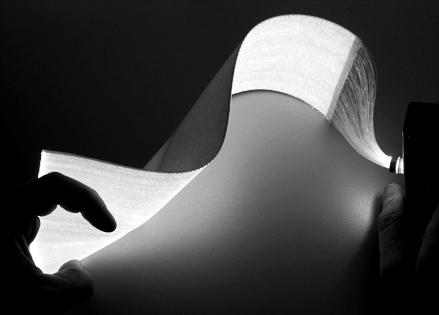
Material Specifications
⋅ Optical fibres in various diameters from 175 μm to 2 mm.
⋅ Adjustable optical fibre density.
⋅ Weight : 100 to 600 g/m².
⋅ Length up to 3m.
⋅ Diameter and radius of curvature FOP : RC pour fo 0,175µm : 4mm.
⋅ Textile threads in various materials (synthetic fibres, natural fibres), colours and textures.
Electronic Specifications
⋅ LEDs with varying power levels.
⋅ Electronic LED control (managed by zone, colour and intensity : DMX, DALI, Bluetooth, Wi-Fi, RF).
⋅ Low voltage (5 V, 12 V, 24 V or sector).
⋅ Low energy consumption.
⋅ Life time: 50,000 to 100,000 hrs.
⋅ Easier maintenance.
⋅ Electronically remote controlled.
